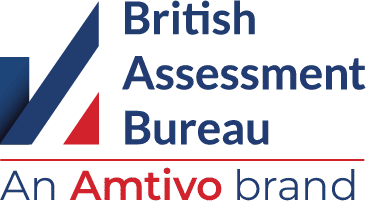If you’ve ever discovered that customer data has been compromised, be it through a stolen laptop or an email sent to the wrong recipient, it’s natural to feel a sense of panic or hope to resolve the issue quietly. However, under the UK’s data protection laws (UK GDPR and the Data Protection Act 2018), certain breaches must be reported to the Information Commissioner’s Office (ICO) promptly.
In this guide, we’ll clarify what constitutes a personal data breach, when you’re obligated to notify the ICO, the risks of concealing a breach, and how small and medium-sized businesses (SMEs) can prepare to handle such incidents effectively.
What Constitutes a Personal Data Breach?
Personal data refers to any information that can identify a living individual such as names, addresses, email addresses, phone numbers, bank details, or health records.
If your organisation holds or processes such data about customers, employees, or partners, you’re responsible for protecting it. A personal data breach occurs when a security incident leads to the loss, theft, alteration, or unauthorised access to personal data.
Common examples include:
- Unauthorised individuals accessing your files or systems.
- Employees accidentally sending data to the wrong recipient.
- Lost or stolen devices (laptops, USB drives, phones) containing personal data.
- Files being deleted or altered without permission.
- System failures that render personal data inaccessible (e.g., losing backups).
In essence, a breach encompasses any security incident affecting the confidentiality, integrity, or availability of personal data. Even if the data isn’t publicly disclosed, unauthorised access or loss can still qualify as a breach under GDPR.
When Must You Notify the ICO?
Not every incident requires reporting. UK law sets a threshold – under the UK GDPR, you must notify the ICO within 72 hours of becoming aware of a breach if it’s likely to result in a risk to individuals’ rights and freedoms.
Even if you lack complete details, it’s crucial to alert the ICO without delay, you can provide updates as your investigation progresses.
Assessing the Risk
Consider whether the breach could harm individuals, for instance, by leading to identity theft, fraud, discrimination, or significant distress. If the breach could cause financial loss, damage someone’s reputation or privacy, or otherwise disadvantage individuals, it meets the reporting threshold.
The ICO advises assessing the potential impact on a case-by-case basis. For example, a stolen customer database (posing a risk of identity fraud) would need reporting, whereas losing a non-sensitive staff telephone list might not.
Key point: If the breach might harm anyone, report it. If it seems harmless, you don’t have to report it, but you must document your assessment and reasoning. The ICO recommends keeping a record of all personal data breaches, regardless of whether you’re required to notify them. This demonstrates due diligence and informed decision-making.
Common Myths and the Reality
Many people hesitate to report breaches due to misconceptions. Let’s address some common myths:
- Myth: “Only major breaches matter.”
- Reality: Any breach that could harm individuals must be reported. Even small companies and seemingly minor incidents may require notification if personal data is at risk.
- Myth: “We can handle it quietly; no one needs to know.”
- Reality: Concealing a breach can backfire. The ICO can learn about breaches from other sources and may issue significant fines for non-reporting. Transparency demonstrates responsibility.
- Myth: “Reporting will ruin our reputation.”
- Reality: Transparency builds trust. Failing to report can lead to worse outcomes, including larger fines and damaged credibility when the truth emerges. The ICO emphasises proportionate enforcement and notes that being honest can avoid fines: “Tell it all, tell it fast, tell the truth.”
- Myth: “The ICO only fines big companies.”
- Reality: The ICO applies the rules to organisations of all sizes. While smaller firms may receive less attention, they’re still subject to the same regulations. Importantly, the ICO’s primary goal is to help organisations improve data practices.
- Myth: “If we don’t report it, no one will know.”
- Reality: If affected individuals complain or regulators discover the breach, not reporting exacerbates the situation. UK law stipulates that knowingly failing to report when required can result in fines up to £8.7 million or 2% of global turnover.
Bottom line: When in doubt, report it. The consequences of silence can be far more severe than those of transparency.
Why Transparency Is Your Best Protection
The ICO encourages reporting. Their small-business guide reassures firms that not every reported breach results in formal action. Their main aim is to provide advice to help organisations avoid similar incidents in the future.
Prompt and honest reporting allows the ICO to guide you on mitigation steps and may shield you from severe enforcement. Conversely, withholding information can invite harsher penalties.
By reporting quickly and fully, you demonstrate accountability. While the law permits fines up to 4% of turnover or £17.5 million (whichever is higher) for serious breaches, the ICO applies penalties proportionately. Cooperative engagement reduces the likelihood of penalties.
Moreover, informing affected individuals (when the risk is high) and the ICO promptly helps prevent further harm. For instance, if stolen data could lead to fraud, alerts enable people to take protective measures, such as cancelling cards or changing passwords. This not only aids individuals but also limits your legal exposure.
Preparing and Responding: Checklist
Being well-organised can streamline breach handling. The following steps outline common practices used before and after a breach occurs:
- Know what you hold: Maintain an up-to-date inventory of personal data you process (customer lists, payroll information, marketing lists, etc.). This facilitates quick impact assessments.
- Train your team: Ensure staff understand what constitutes a data breach and how to identify one (e.g., lost files, suspicious emails).
- Have a response plan: Develop a straightforward breach-response procedure. Designate a responsible individual (owner, manager, or IT/security specialist) and outline escalation protocols. The plan should detail how to contain breaches (e.g., changing passwords, retrieving data) and gather facts.
- Act swiftly when a breach occurs: Upon discovering a breach, document the facts: what happened, when, whose data is involved, and your response actions. Contain the breach immediately (recover devices, change passwords, secure systems) to prevent further data loss.
- Assess risk to individuals: Quickly evaluate whether the breach is likely to harm individuals’ rights or freedoms (identity theft, harassment, financial loss, etc.). Use official guidance or tools (the ICO offers a self-assessment tool and helpline) to determine if reporting is necessary. Document your risk assessment thoroughly to justify your decision.
- Notify the ICO if required: If you determine the breach could harm individuals, report it to the ICO within 72 hours. You can use the ICO’s online reporting form or call their helpline. Provide available information, and remember you can supplement details later. Meeting the deadline is crucial – you can update the record afterward.
- Inform affected individuals (if high-risk): If the breach is serious (e.g., involves sensitive personal or financial data), the UK GDPR mandates informing those affected directly, without undue delay. In plain terms: if someone’s privacy or safety is seriously at risk, warn them so they can take protective steps.
- Keep records: Document all breaches – even those you don’t report – and all actions taken. This is a legal requirement. Comprehensive records demonstrate to the ICO that you took the incident seriously and adhered to the rules.
Quick Checklist (After a Breach):
- Contain the breach (secure systems, retrieve data, etc.).
- Gather facts: what happened, when, who’s affected.
- Assess risk: could people be harmed?
- Notify the ICO within 72 hours if risk is likely.
- Inform individuals if the risk is high.
- Document everything (actions, decisions, communications).
- Learn and improve: adjust your security and policies to prevent repeats.
Professional Help and Certification
Managing data protection can be challenging, especially for smaller businesses. Seeking expert support or pursuing formal certifications can be a valuable step toward strengthening your organisation’s information security and compliance.
Industry-recognised standards like ISO 27001 (for information security) and Cyber Essentials (for cyber hygiene) help businesses build robust, defensible processes.
At British Assessment Bureau, we offer ISO 27001 certification services. We have also gathered useful information about how to comply with GDPR which can help your business to identify gaps in your current data protection practices, and we also offer a Data Protection Training Course.
Getting certified or trained may seem like a significant investment, but it pays off by lowering the chance of breaches and improving your response readiness. It also signals to customers and regulators that you take data protection very seriously, helping gain business overtime, which will be a return of investment when certified.
Contact Us
British Assessment Bureau has supported hundreds of UK SMEs with cyber security, and ISO-related training and certification services. If you’re unsure where to start, make sure you get in touch with our expert team today for further information.


